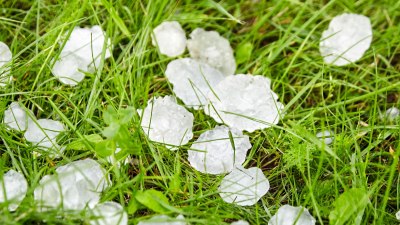How to Recognize the First Signs of Seasonal Changes
Learn the early signs of seasonal changes and how to identify them effectively.

Seasonal changes are the natural transformation of the environment that occurs due to the Earth's axial tilt and orbit around the sun. Recognizing the early signs of these changes can help individuals adapt their lifestyles accordingly and enjoy the unique beauty each season has to offer. Here are some of the key signs to look for in the transition between seasons.
1. Temperature Fluctuations
One of the most apparent signs of seasonal change is the fluctuation in temperature. As spring approaches, you may notice that the chilly winter air begins to warm up. Similarly, during the transition from summer to autumn, there is often a noticeable drop in daily temperatures. These shifts can be accompanied by varying weather patterns, which may include warmer days intermixed with cooler evenings as well as the eventual establishment of the season's climate.
2. Changes in Daylight
Another significant sign of seasonal change is the adjustment in daylight hours. In winter, days are shorter, while in summer, they are notably longer. As the seasons transition, you’ll observe gradual changes in sunrises and sunsets. For instance, as spring approaches, the sun rises earlier and sets later, giving you more daylight time. Conversely, transitioning into winter often involves earlier sunsets and later sunrises.
3. Shifts in Flora
The plants and trees in your vicinity also serve as an excellent indicator of seasonal change. In winter, many trees become bare and dormant, while spring brings blooming flowers and budding leaves. Observing these natural shifts can signify the time of year. During fall, you may notice leaves changing color to hues of orange, red, and yellow before they eventually fall off. Similarly, in spring, the first signs of blooming flowers can include crocuses and daffodils pushing through the thawing ground.
4. Animal Behavior
Wildlife is particularly sensitive to the changes in seasons. Animals exhibit various behaviors in response to seasonal shifts, such as migration and hibernation. For example, birds often migrate south during the winter months, returning in the spring. Additionally, many animals may become more active in the spring as food becomes more abundant, while in winter, some species may enter hibernation or a state of dormancy. Observing local wildlife can, therefore, provide valuable insights into seasonal changes.
5. Changes in Clothing
The type of clothing people wear can also reflect seasonal changes. As temperatures begin to rise, people typically switch to lighter clothing and fabrics, moving away from winter coats and sweaters. Conversely, as temperatures drop, you may see an increase in layered clothing, scarves, and heavy coats. Additionally, seasonal fashion trends often emerge, with certain colors and styles becoming more prevalent in spring compared to the darker tones of winter.
6. Seasonal Scents
Nature produces different fragrances that can indicate shifts in seasons. In spring, you might be greeted by the scent of blooming flowers, fresh rain, and grass. Summer often brings scents of warm earth, blossoming gardens, and outdoor barbecues. As fall approaches, the earthy scent of decaying leaves and the crispness of autumn air become dominant. In winter, you can smell the woodiness of burning fireplaces and the fresh scents of evergreen trees. Paying attention to these scents can enhance your awareness of seasonal changes.
7. Food Availability
Seasonal changes greatly affect the availability of certain foods. Springtime often brings new vegetables and fruits like asparagus, strawberries, and peas, while summer is abundant with tomatoes, corn, and berries. Autumn yields pumpkins, apples, and hearty squashes. During winter, the food choices shift towards storage crops like potatoes and winter squash as well as preserved foods. Local farmers' markets and grocery stores often reflect these seasonal shifts, so observing what’s available can give you insight into the seasonal changes happening around you.
8. Outdoor Activities
As the seasons change, so do outdoor activities and how individuals engage with nature. In winter, activities such as skiing, snowboarding, and ice skating become popular, while spring invites hiking, gardening, and outdoor sports as the weather warms up. Summer opens up opportunities for swimming, picnics, and camping. Finally, fall is often the time for apple picking, hayrides, and enjoying the changing foliage. Each season, therefore, brings with it different recommended activities, providing hints about the time of year.
9. Changes in Wildlife Sounds
Paying attention to the sounds in your surroundings can also provide clues about the change of seasons. In spring, you may hear an abundance of bird songs as they return from migration. Summer nights might be filled with the sounds of crickets and frogs. As fall approaches, the sounds might include rustling leaves and animal calls preparing for winter. In winter, sounds are often quieter, with snow muffling the usual noise. Listening to your environment can heighten your awareness of seasonality.
10. Cultural and Festive Indicators
Cultural events often reflect the changing seasons, from holiday celebrations to seasonal festivals. For instance, many cultures celebrate the arrival of spring with festivals such as Easter or Holi, while fall might be marked by harvest festivals or Halloween celebrations. Understanding local customs can also help recognize the transition between seasons, allowing individuals to engage meaningfully with their communities.
Recognizing the first signs of seasonal changes requires awareness and attention to detail. By observing temperature fluctuations, daylight changes, flora and fauna, clothing trends, scents, food availability, outdoor activities, wildlife sounds, and cultural events, you can become more in tune with your environment. These signs not only enrich your understanding of the natural world but also enhance your appreciation of the cyclical beauty of the seasons.











